 In
the 1800s, central Florida was primarily agricultural; however, with
the end of the Civil War, a stout tourist trade started to take advantage
of Florida’s temperate winters, long summers and abundant natural
beauty, and out of that growth came Wekiwa Springs. In 1941, the Apopka
Sportsmen’s Club purchased the property from the Wilson Cypress
Company, which had maintained a small turpentine camp in what is now
the park, maintaining the area for recreational use. By 1979 the state
of Florida expressed interest in the property for use as a state park,
and, starting in 1970, visitors from all over the country and all over
the world have been enjoying the natural spring, crystal clear water,
and the area's abundant wildlife. A major point for the spring's popularity
is the year-round 72 degrees F temperature of the water. In
the 1800s, central Florida was primarily agricultural; however, with
the end of the Civil War, a stout tourist trade started to take advantage
of Florida’s temperate winters, long summers and abundant natural
beauty, and out of that growth came Wekiwa Springs. In 1941, the Apopka
Sportsmen’s Club purchased the property from the Wilson Cypress
Company, which had maintained a small turpentine camp in what is now
the park, maintaining the area for recreational use. By 1979 the state
of Florida expressed interest in the property for use as a state park,
and, starting in 1970, visitors from all over the country and all over
the world have been enjoying the natural spring, crystal clear water,
and the area's abundant wildlife. A major point for the spring's popularity
is the year-round 72 degrees F temperature of the water.
|
|
|
The main attraction at Wekiwa Springs Park
is the spring, providing approximately 42 million gallons of water to
the Wekiva River each day The swimming area varies in depth from under
a foot to five feet, and a small 15-foot-deep cavern at the source of
the spring. The cavern extends deeper into a cave, which has been explored
in great detail. SCUBA and cave diving is strictly prohibited. The park
has a nature center, and access to Wekiwa Springs, Wekiwa Springs Run,
Rock Springs Run and the Wekiva River. Picnic pavilions equipped with
charcoal grills exist in the picnic area. Canoes and Kayaks can be rented
at the nature center. There are four campsites in Wekiwa Springs State
Park that can only be accessed by canoe or kayak. |
|
|
Below: The two RV Gypsies rented the paddle
boat so that Lee Duquette could exercise his knees. Unlike the canoes
and kayaks, paddle boats must stay in the small lagoon area, but that
was OK for the two RV Gypsies because they had fun watching the alligators
and turtles. |
|
|
|
|
|
|
 But
then came the surprise! Karen Duquette was photographing a baby alligator
swimming beside the paddle boat and then the baby alligator swam to
the other side of the paddle boat. Then Lee Duquette said there was
a bigger alligator on the other side of the boat. But before Karen could
photograph it, they heard a big splash and then they saw the big alligator
but the baby alligator was gone. The big alligator ATE the poor baby.
Bummer! Especially since it would have been a prize-winning photo or
video if Karen had been able to capture the actual second the big one
grabbed the baby. It was sad in lots of ways, but that is nature. But
then came the surprise! Karen Duquette was photographing a baby alligator
swimming beside the paddle boat and then the baby alligator swam to
the other side of the paddle boat. Then Lee Duquette said there was
a bigger alligator on the other side of the boat. But before Karen could
photograph it, they heard a big splash and then they saw the big alligator
but the baby alligator was gone. The big alligator ATE the poor baby.
Bummer! Especially since it would have been a prize-winning photo or
video if Karen had been able to capture the actual second the big one
grabbed the baby. It was sad in lots of ways, but that is nature.
|
Below are three photos of the baby alligator
in the last few moments of its short life. |
|
|
|
Below: And here is the bigger alligator
which was probably thinking- 'yummy yummy yummy in my tummy.'
Then it went to rest and hide in a corner as if it had done something
wrong. Or, like many humans, the alligator just likes to nap after eating. |
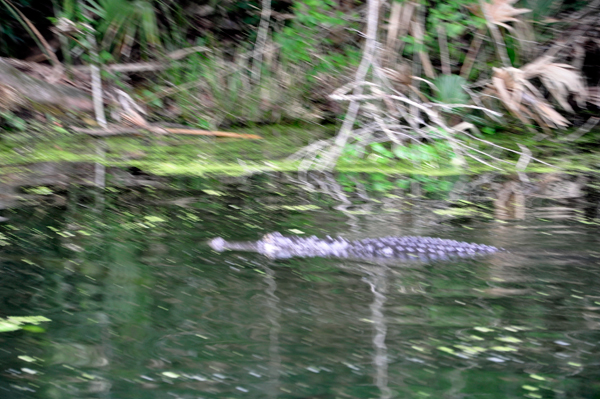
|
|
Below are photos of different alligators
in the lagoon. All of these were smaller alligators that the two RV
Gypsies have come across in the past, but it was still exciting to be
so close to them. They were not always easy to spot, but Lee Duquette
had eagle eyes. |
|
|
Below: And Karen Duquette got bit too -
NO, not by an alligator, thank goodness. But while still on the paddle
boat, Karen started itching because something got her leg good and this
red spot grew bigger and itched for days. It was also very hot to the
touch. They are not sure what caused it. |
|
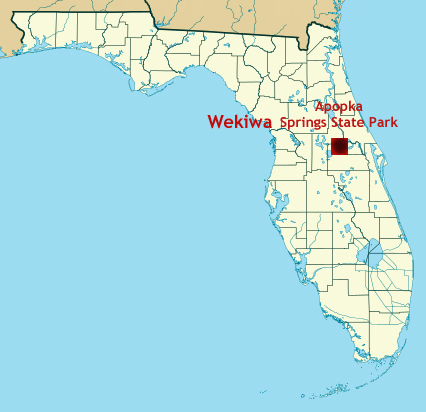
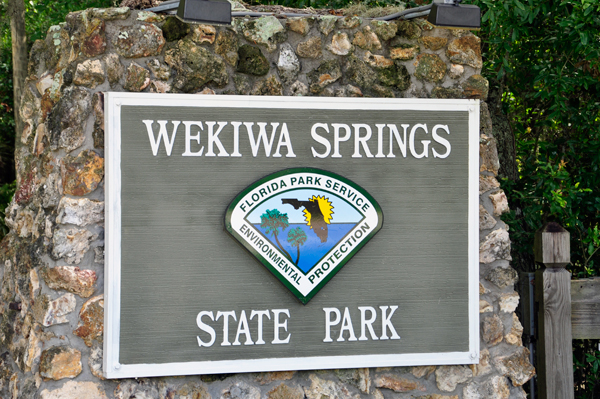
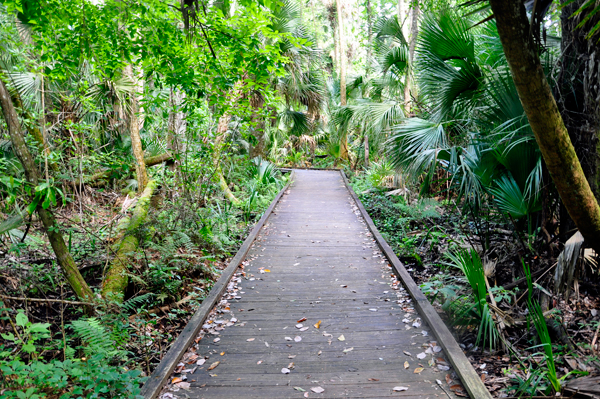
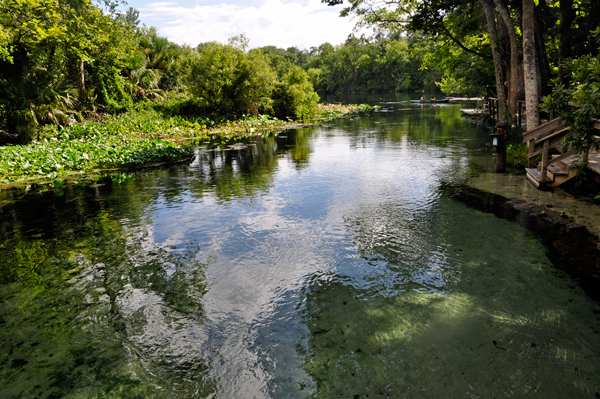
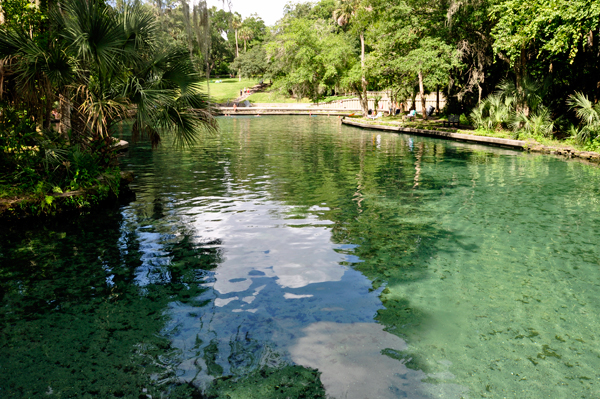
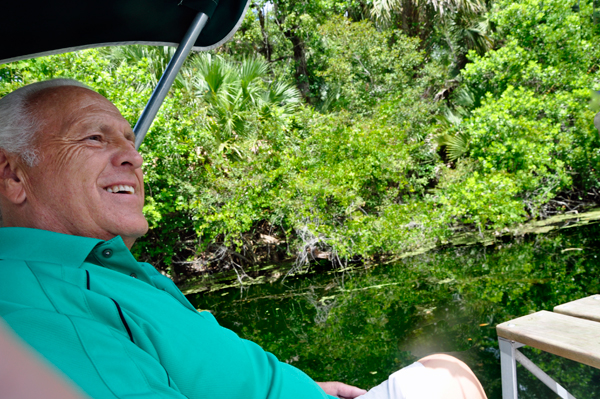
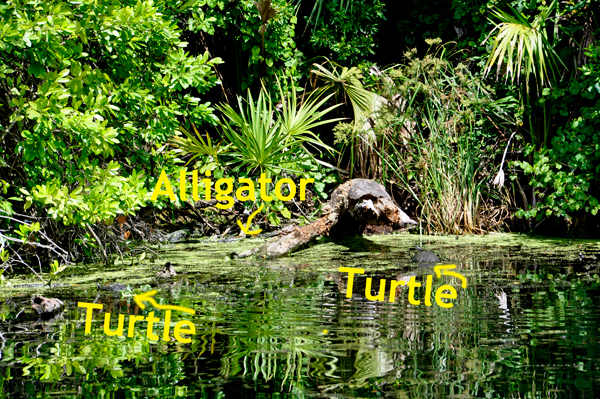
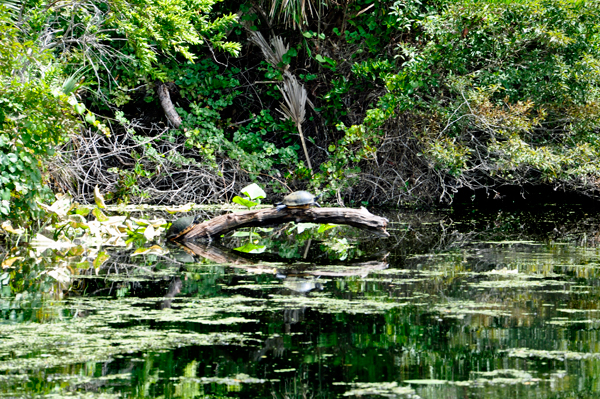
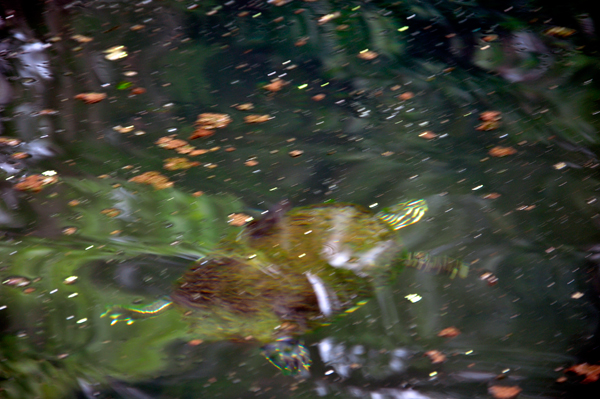
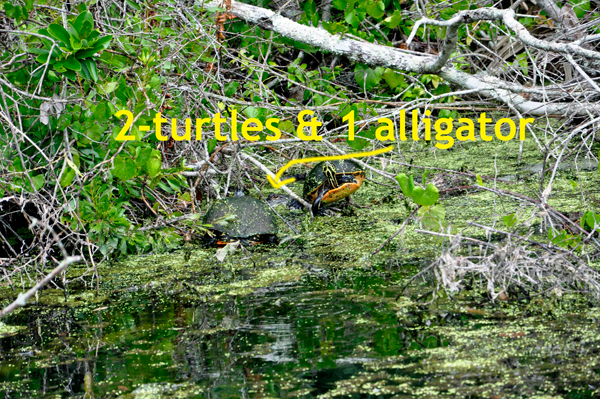
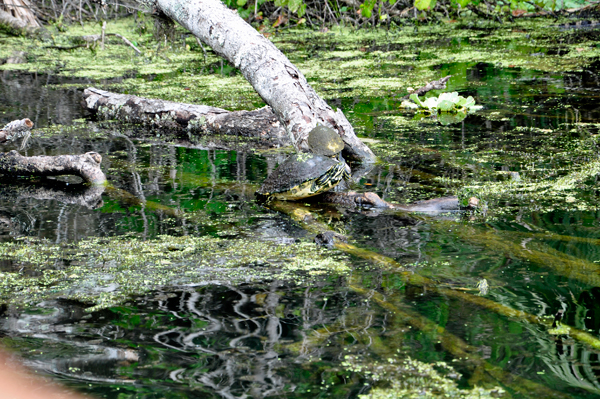
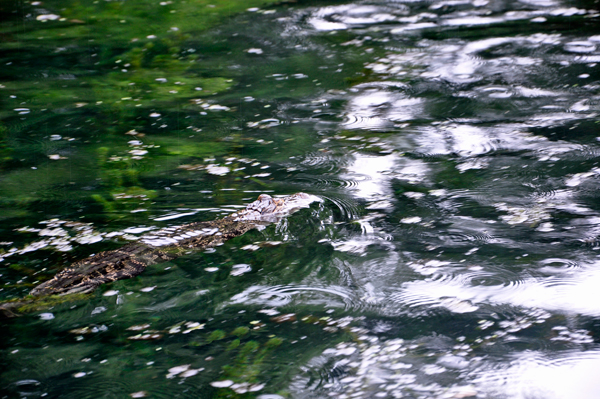
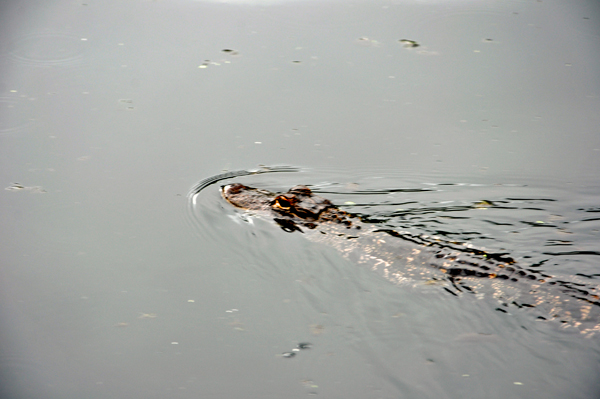
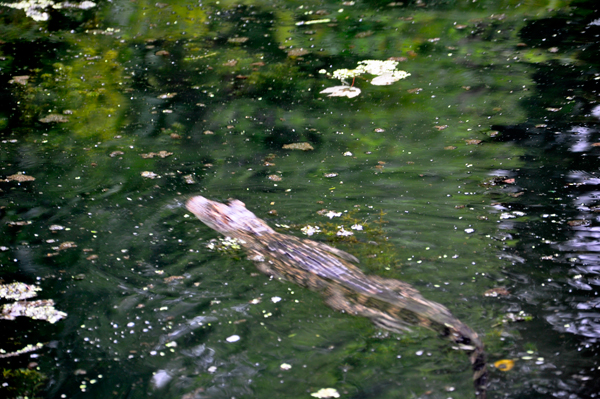
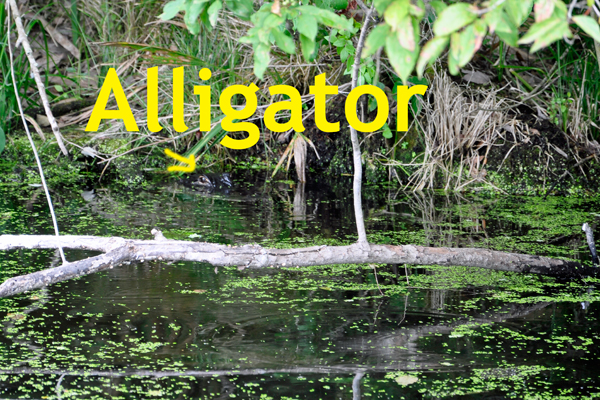
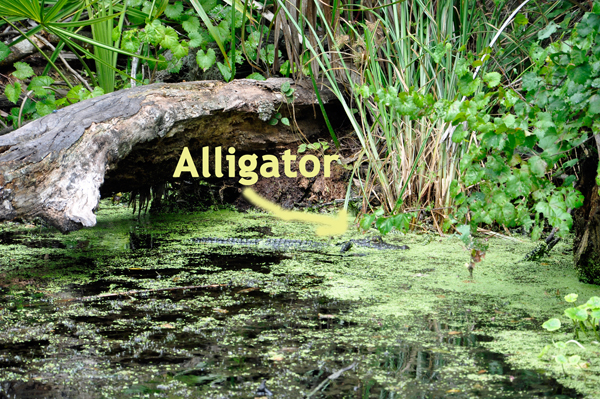
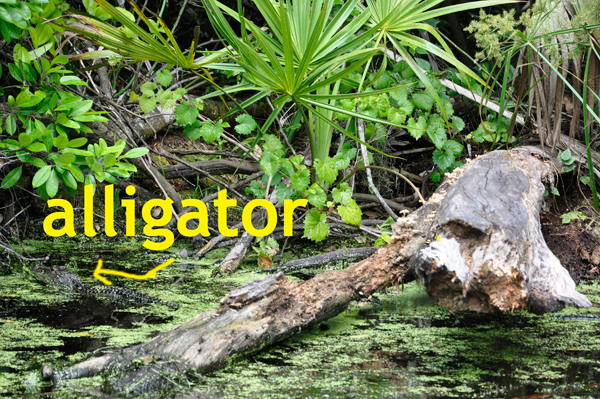
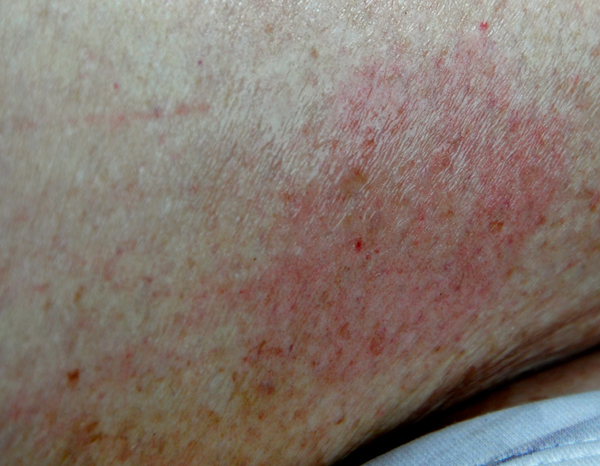























 Wekiwa Springs State Park is located at the headwaters of the Wekiva River. The beautiful vistas within this park offer a glimpse of what Central Florida looked like when Timucuan Indians fished and hunted these lands. Wekiwa Springs offers visitors the opportunity to relax in a natural setting, enjoy a picnic, or take a swim in the cool spring. Canoeists and kayakers can paddle along the Wekiva River and Rock Springs Run. Thirteen miles of trails provide opportunities for hiking, bicycling, and horseback riding. Arrive early on weekends because the parking lot fill up quickly. The Wekiva River (sometimes spelled Wekiwa, a Creek word meaning spring of water) is a 16.0-mile-long river. It originates in Apopka, Florida and joins the St. Johns River, the longest river in the state, in DeBary, Florida. The Wekiva River system includes the main stem of the Wekiva River joined by three main tributaries - Rock Springs Run, Blackwater Creek and Little Wekiva River - and about 30 contributing groundwater springs. It is designated as a Florida State Canoe Trail by the Florida Department of Environmental Protection. The Wekiva River system is also one of the two rivers in Florida federally designated as a National Wild and Scenic River for its scenery, recreation, geology and diverse habitats.
Wekiwa Springs State Park is located at the headwaters of the Wekiva River. The beautiful vistas within this park offer a glimpse of what Central Florida looked like when Timucuan Indians fished and hunted these lands. Wekiwa Springs offers visitors the opportunity to relax in a natural setting, enjoy a picnic, or take a swim in the cool spring. Canoeists and kayakers can paddle along the Wekiva River and Rock Springs Run. Thirteen miles of trails provide opportunities for hiking, bicycling, and horseback riding. Arrive early on weekends because the parking lot fill up quickly. The Wekiva River (sometimes spelled Wekiwa, a Creek word meaning spring of water) is a 16.0-mile-long river. It originates in Apopka, Florida and joins the St. Johns River, the longest river in the state, in DeBary, Florida. The Wekiva River system includes the main stem of the Wekiva River joined by three main tributaries - Rock Springs Run, Blackwater Creek and Little Wekiva River - and about 30 contributing groundwater springs. It is designated as a Florida State Canoe Trail by the Florida Department of Environmental Protection. The Wekiva River system is also one of the two rivers in Florida federally designated as a National Wild and Scenic River for its scenery, recreation, geology and diverse habitats. But
then came the surprise! Karen Duquette was photographing a baby alligator
swimming beside the paddle boat and then the baby alligator swam to
the other side of the paddle boat. Then Lee Duquette said there was
a bigger alligator on the other side of the boat. But before Karen could
photograph it, they heard a big splash and then they saw the big alligator
but the baby alligator was gone. The big alligator ATE the poor baby.
Bummer! Especially since it would have been a prize-winning photo or
video if Karen had been able to capture the actual second the big one
grabbed the baby. It was sad in lots of ways, but that is nature.
But
then came the surprise! Karen Duquette was photographing a baby alligator
swimming beside the paddle boat and then the baby alligator swam to
the other side of the paddle boat. Then Lee Duquette said there was
a bigger alligator on the other side of the boat. But before Karen could
photograph it, they heard a big splash and then they saw the big alligator
but the baby alligator was gone. The big alligator ATE the poor baby.
Bummer! Especially since it would have been a prize-winning photo or
video if Karen had been able to capture the actual second the big one
grabbed the baby. It was sad in lots of ways, but that is nature. 



